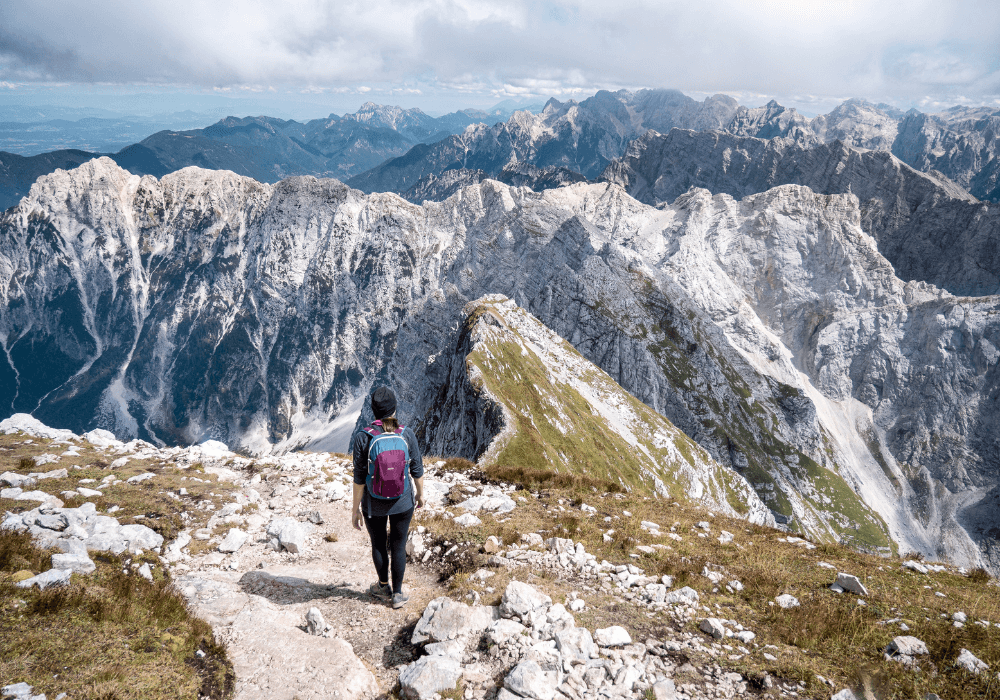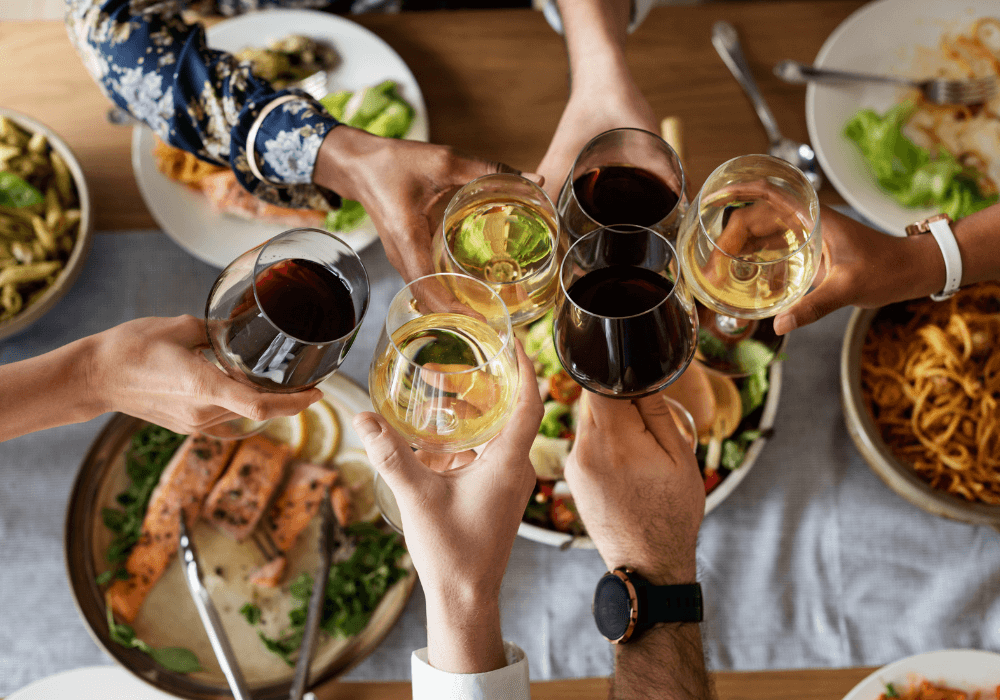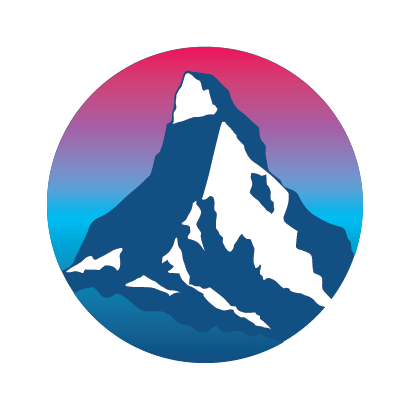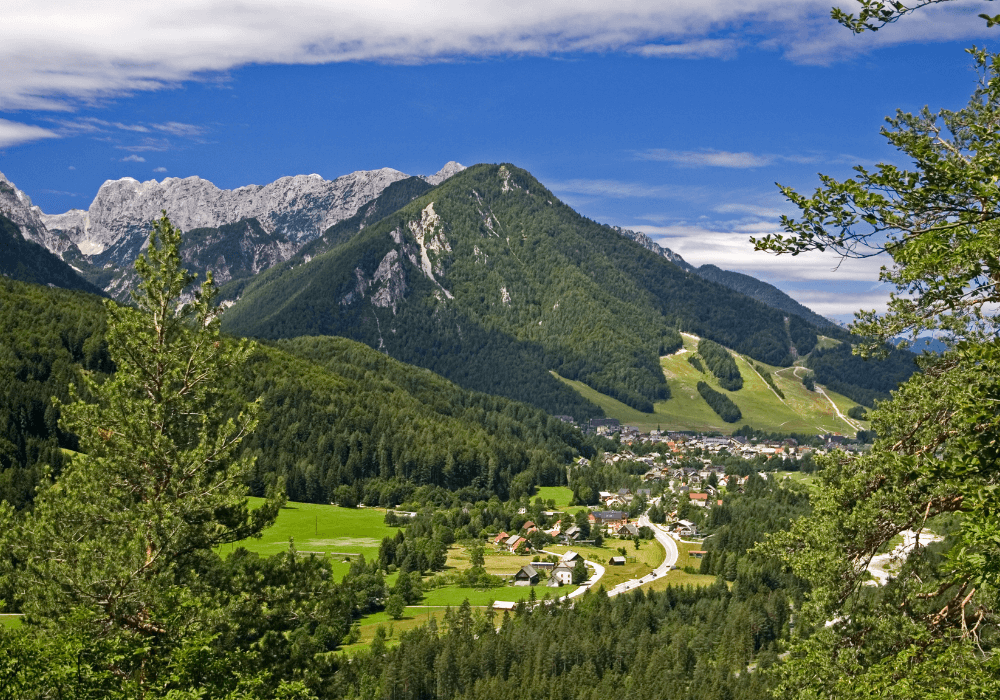History
Based on professor Albin Belar‘s original concept in 1908, Slovenia’s Alpine Protection Park was finally realized in 1924. Starting out at 1600 hectares, the park has grown incrementally through the years and today encompasses almost all of Slovenia’s portion of the Julian Alps. At 83,807 hectares, four percent of Slovenian territory, the park is one of the largest in Europe and functions to protect both the natural and cultural treasures of the region. The highest peak, of course, is Triglav at 2864 meters, and the lowest point is the Korita gorge at just 180 meters. This massive relief is largely due to glacial action and the wind/water effect on the Triassic limestone which comprises most of the park‘s terrain.
 Forest covers two-thirds of the park‘s terrain and trees are a very important element of the park‘s eco-system. Beech, spruce and larch are the main species, the beech trees going as high as 1600 meters and the spruce and larch extend to the treeline at 1800 meters. A huge diversity of flora and fauna are present in the park, over 5,500 species as a matter of fact. Chamois, bear and eagle are the best-known of the animals, while the Triglav Rose and Triglav Gentian are unique to the area.
Forest covers two-thirds of the park‘s terrain and trees are a very important element of the park‘s eco-system. Beech, spruce and larch are the main species, the beech trees going as high as 1600 meters and the spruce and larch extend to the treeline at 1800 meters. A huge diversity of flora and fauna are present in the park, over 5,500 species as a matter of fact. Chamois, bear and eagle are the best-known of the animals, while the Triglav Rose and Triglav Gentian are unique to the area.
The high crest of the mountains in the park form the watershed between the Adriatic and the Black Seas. The Soca River runs south through the Trenta valley and the Sava runs east through Kranjska Gora.
Culture and Cuisine
The Slovenian people are sophisticated, down to earth, and peace-loving. Living amidst such beautiful mountains, they still respect their humble beginnings. Their cuisine is influenced by their simplicity and cultural surroundings.
With its close proximity to Italy, pizza and gelato is quite easy to come by. Tagliatelle and Mesano Meso na Zam (mixed grill) may be seen on menus in Kranjska Gora. Don’t be surprised when your Skampi na Zarn arrives with the shrimp heads and shells still intact.
Klobasa
From the Austrian influence, klobasa is not to be missed. The best versions are usually grilled and served with spicy mustard. At Zasavska Koca, you may find yourself ordering slena (another) klobasa because you are so hungry and it is so good! Jota or pasulj, is a Hungarian bean soup that may have klobasa diced up into it. If you prefer veggie-style, ask for ne meso (no meat).
Palacinke
Hungarian-style pancakes (palacinke) could also be a good non-meat option for lunch, if you have a sweet tooth. Imagine crepes with sugar and marmelada (jam)…yum. Carmen at Dom na Komni makes the best.
Breakfast in the Julian Alps
In the hotels, buffets similar to those in Switzerland greet you in the morning. Hard-boiled eggs, jams, and fruit are common. Hut breakfasts range from eggs (jajca) fried atop fried ham to basic bread and butter (maslo). Everyone seems to have kava (coffee) and sometimes caj (tea) around any meal.
Lunches may consist of hut-made sandwiches of ham, cheese and pickles or store bought cheese (sir), crostinis and smoked meats (nazarek). Be careful at Vogar when Karl shows you his sadjevec collection at lunch. You still have some walking to do!
Apres Hike Treat
When your hiking day is done, a Lasko pivo (beer) will be welcome. If you are very thirsty, order a veliko pivo (.5L) or not so much, a malo pivo (.3L). Zlatorog brewed by Lasko is crisp and dry, whereas the Union pivo is a bit sweeter.
Slovenia’s Wine and Spirits
 Slovenia’s wines are as diverse as its landscape. Look for Pinela (white), sweet Rumeni Muskat, Cvicek (light, dry red) or ruby-red, peppery wine made from the Refosk grape.
Slovenia’s wines are as diverse as its landscape. Look for Pinela (white), sweet Rumeni Muskat, Cvicek (light, dry red) or ruby-red, peppery wine made from the Refosk grape.
You may not have enough time to sample all of Slovenia’s spirits. Zganje is a strong brandy distilled from a variety of fruits. If cherry is your flavor, choose cesnjevec. Pear brandy is called vilamovka and one of the most popular is medeno zganje, fruit brandy flavored with honey. Although these libations taste as pure as the Soca River, remember that the Slovenians put up some stiff signposts. So drink lots of voda (water) with your schnapps.









Comments are closed.